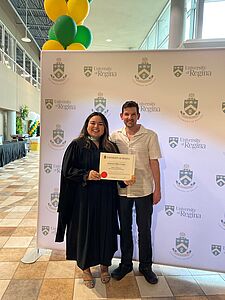2022 CSBBCS / CPA CJEP Best Article Award Winner: Rebekah Corpuz

Citation
Corpuz, R. L., & Oriet, C. (2022). Within-person variability contributes to more durable learning of faces. Canadian Journal of Experimental Psychology/Revue canadienne de psychologie expérimentale, 76(4), 270 - 282. doi:10.1037/cep0000282.
Abstract
Exposure to the natural, unsystematic within-person variability present across different encounters with a face (eg, differences in emotion, makeup, and hairstyle) increases the likelihood the face will be recognized despite changes in appearance. In most studies, participants’ memories are tested with a matching task administered shortly after exposure to a set of training images. In the real world, however, the time between when a face is first encountered and when it needs to be identified can be much longer. We hypothesized that in addition to facilitating acquisition of a representation of a face, unsystematic variability might also lead to better retention. To test this, in two experiments participants were randomly assigned to one of three training conditions:(a) no variability (still image),(b) systematic variability (changes in camera angle and pose in an otherwise constant setting), and (c) unsystematic variability (changes in hairstyle, makeup, clothing, and setting). Participants completed a sorting task 15 min and 5 days after viewing the target identity. Unsystematic variability led to better recognition than systematic variability, and this benefit was not reduced after a 5-day delay. Although participants expected their memory to be worse with a 5-day delay than with a 15-min delay, both overall accuracy and the advantage for training with unsystematic variability were virtually unaffected. The results suggest that exposure to unsystematic variability influences not only the initial acquisition of faces but also contributes to establishing a durable, flexible representation of faces in memory.

